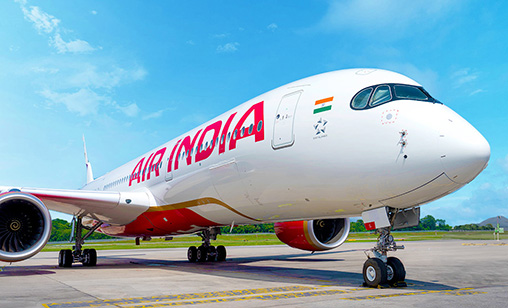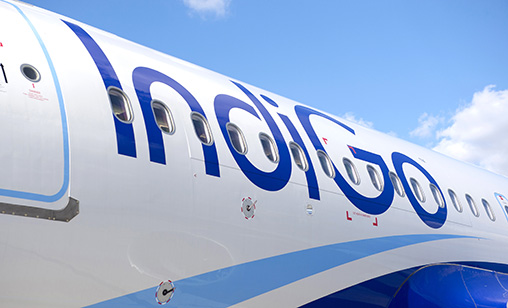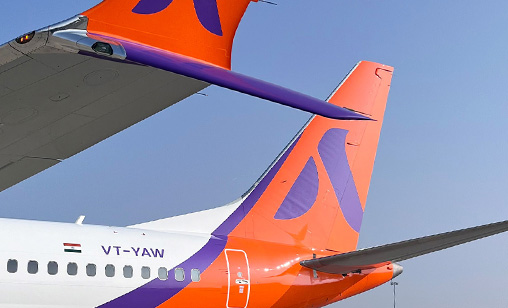Main Story
India aviation sweeps aside decades of stagnation
India’s airline industry is unrecognizable from five years ago and now on its way to a duopoly, reports Anjuli Bhargava.
August 1st 2024
Indian aviation is in the throes of mega change. Read More » After Tata Sons rescued failed flag carrier, Air India, almost three years ago, the airline is fast progressing through renewal: and also acquisition of full-service carrier, Vistara, and AirAsia India as Air India Express. As a result, the new Air India is on track to be the second largest airline in India spanning domestic and international operations. Backed by billions in funding from its conglomerate owner, it is poised to add capacity at breakneck speed.
As well, India’s largest LCC, privately-owned IndiGo, is emerging as a wholly new airline creature. It will no longer be a low-fare airline. It is transitioning into a full-service carrier, a reversal of the unhappy fate of Jet Airways.
 |
 |
 |
IndiGo is diversifying from its strong domestic base to more and more international routes and planning to introduce business class on domestic routes than can support premium fares.
Also in the pipeline is the establishment of a points based loyalty program, a marketing tool offered by full-service carriers.
Between them, the Air India group and IndiGo account for 91% of India’s air traffic. IndiGo has a 62% market share and Air India carriers 29%. Akasa Air (5%), SpiceJet (3%) and others (1%) make up the remaining 9%.
Two incumbents, Jet Airways and Go First, are shuttered and unlikely to re-launch. SpiceJet, the country’s oldest surviving LCC, is doing everything in its power to stay flying although more than a few problems threaten its existence.
It has whittled its fleet to 20 aircraft and its current market share now positions it as an insignificant player in India’s skies.
However, it continues to hunt for funding, which is proving harder to come by as some investors see the writing on the wall for SpiceJet: consolidation and competing with large well-funded rivals needs very deep pockets.
Brave new entrant, Akasa Air, is growing at a fairly fast clip although all bets are off when it comes to predictions of its longevity. On a positive note, it now has a bigger share of the air traffic pool than more mature rival SpiceJet.
In the midst of all this, air traffic has picked up quite sharply after an equally sharp drop in the pandemic. India’s millions are travelling like there is no tomorrow. By 2030, it is forecast the country’s airlines will be operating a combined fleet of 1,400 airliners compared with around 700 today.
As a result of the accelerating growth, regulators are being pressed to examine several issues in the sector. The top three concerns are passenger dissatisfaction, safety and pilot fatigue/work life balance.
Readers should note that while safety concerns and poor training standards have always plagued the industry in some airlines in particular, pilot fatigue is a post-pandemic concern.
Pre-COVID-19, pilots off and on did complain of poor work/life balance, but the pressure seems to have intensified since the end of the pandemic.
Passenger grievances also have leapt in number as passengers flying daily have exploded. And the problems are worsening as the volume of passenger flying has pushed the daily volume of customer grievances through the roof.
Rarely does a day go by without an airline passenger claiming on social media to have suffered some manner of injustice at the hands of an airline. The complaints range from flight cancellations to flight delays (now par for the course) and overcharging.
In a country where 130 million people are forecast to fly this year, a government consumer commission should be established to investigate and adjudicate these issues.
A second major worry for India’s passengers is safety. In an economic environment where flying is still considered a luxury and where airlines are under constant pressure to offer ever lower fares, often below cost, there is a tendency to save money by delaying mandatory checks and maintenance of spares.
“This can play havoc with airline safety since a serious accident is usually a build-up, or a series of negligent acts that lead to it,” a former director general of India’s Directorate General of Civil Aviation (DGCA) told Orient Aviation.
The situation is aggravated by the fact there is a cultural tendency in India to find loopholes and take shortcuts.
Almost every few weeks some gap or shortcoming in the functions and operations of an airline are uncovered. In 99% of cases, the gaps are unintentional, but it is still critical for India’s regulator to remain vigilant in its safety oversight of the country’s airlines.
An instance of this problem was most recently demonstrated by Tata’s LCC, AIX Connect, formerly AirAsia India. The DGCA gave the carrier a sharp rap on the knuckles after it found the airline had not been conforming to pilot training requirements as specified by the International Civil Aviation Organisation (ICAO). In particular, the regulator found, during a regular surveillance audit, that examiners were certifying would-be pilots to fly without training them to handle an aircraft if its weather radar malfunctioned during a flight.
DGCA auditors also discovered some of the LCC’s crew had not received simulator training on GPS warnings for ground proximity.
India’s airlines run on wafer thin margins and are focused on cutting costs, which can compromise safety.
Take, for example, the mad rush that often ensues when an LCC flight lands. In efforts to minimize turnaround time, passengers are boarding as passengers on the incoming flight have not disembarked the aircraft.
“This can have serious consequences if the engineers and safety protocols are rushed,” a retired civil aviation secretary said.
As matters stand, India’s DGCA is in charge of airline safety, but no independent body exists to pursue passenger issues. The result is the DGCA is carrying out several roles unrelated to its core functions.
With more Indians taking to the skies and no one looking out for the interests of passengers, the DGCA is being asked to find solutions to everything from higher fares, passenger misbehavior and flight delays to the transgressions of airlines.
It has become the nation’s favourite punching bag for all industry afflictions. In itself, this is a safety threat since the regulator in charge of keeping flying accident free is perpetually distracted by matters unrelated to its brief and jurisdiction.
The situation was compounded by the pandemic. Post COVID, as the industry limped back to normalcy, some of the financial stress airlines and their employees suffered seemed to ease. However, the work/life balance for airline staff, especially for LCC crew, appears to have worsened.
A number of incidents in 2023, including the deaths of some airline captains while on duty created a panicky buzz on social media. Several news reports cited poor health from overwork, accumulated stress and fatigue for the deaths.
In a recent well-documented post, a captain working for a private airline in India objected publically to his 156 hour duty roster made up of 70 hours of flying and 24 hours of overtime.
He said he wrote to his employer to state he did not wish to exceed his regular duty hours and did not want any overtime – regardless of what he could earn-as “this kind of flying is beyond my capacity”.
The roster included four early morning and six windows of circadian low (WOCL)”. WOCL is the period between 0200 and 0600, a time of day when the mind and body are at their lowest functioning capacity.
In November 2023, the DGCA issued new guidelines to ensure proper rest periods for airline crew and placed a far greater onus on carriers to design rosters that lowered the work burden on pilots and cabin crew.
The new guidelines were supposed to apply from June this year, but have not yet been ruled into law as the changes are before India’s High Court. The country’s airlines and aviation regulator must tackle these issues or they will suffer the consequences.